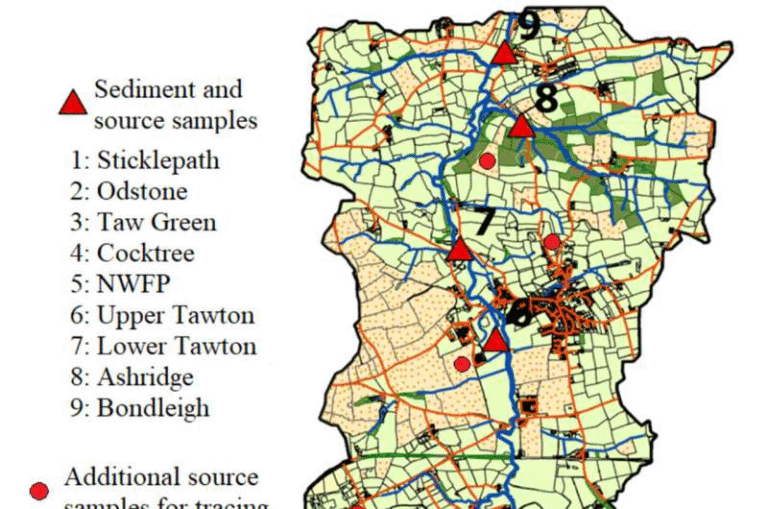Chasing Molecules Show How Order Can Arise from Chaos in Living Systems


Scientists from the Max Planck Institute for Dynamics and Self-Organization (MPI-DS) in Germany have uncovered a fascinating way in which molecules can self-organize into stable and predictable patterns—even when everything around them seems chaotic. The discovery reveals how non-reciprocal interactions—where one type of molecule chases another while being repelled in return—can generate remarkably resilient and ordered motion. The study, led by physicist Giulia Pisegna and published in Physical Review Letters (2025), demonstrates that this chasing-and-splashing behavior might help explain how order emerges in living systems and complex fluids.
The Science Behind Non-Reciprocal Interactions
In most natural systems, when one object exerts a force on another, there’s an equal and opposite reaction—this is Newton’s third law. But in some systems, particularly at microscopic scales or in active matter, these interactions become non-reciprocal. That means particle A might be attracted to particle B, but B might not return the favor—it could even be repelled by A.
These non-reciprocal interactions break the conventional symmetry of action and reaction. They are commonly found in biological systems, from microorganisms that follow chemical cues to predator-prey behaviors at the molecular scale. While this asymmetry sounds chaotic, researchers at MPI-DS have shown that it can actually create order, leading to stable movement patterns that persist over time.
In their model, one species of particle continuously chases the other. This chasing interaction causes the two species to form dynamic, repeating spatial patterns. What initially looks like disorder eventually becomes a self-sustained wave of motion, maintaining direction and structure even under disruptive conditions.
Simulating the Dance of Chasing Particles
The researchers developed a mathematical model to capture this effect, known as the non-reciprocal Cahn–Hilliard (NRCH) model. This model is typically used to describe how different substances separate and mix, but here it was modified to include asymmetric interactions between two species.
To take it a step further, they introduced the system into a fluid environment—a situation much closer to real life, since most biological systems exist in fluids. This extended version of the model, called the hydrodynamic non-reciprocal Cahn–Hilliard (h-NRCH) model, includes fluid motion and hydrodynamic interactions, where the movement of one particle affects the flow and behavior of others around it.
Normally, introducing a fluid makes collective motion harder to maintain. The swirling flows and viscous forces tend to disrupt alignment and organized movement. However, the MPI-DS team found the opposite: when non-reciprocal interactions drive the motion, the emerging order remains stable even within the complex environment of a liquid.
What the Researchers Found
The simulations revealed that as soon as non-reciprocity is strong enough, the two species begin to move collectively in a directed way. The particles create self-sustaining traveling waves, maintaining an organized front that moves steadily through space.
To test how robust this system really is, the scientists added noise and disturbances, the scientific equivalent of shaking things up. They expected the collective motion to collapse—but instead, the pattern persisted.
This was a crucial finding: the motility pattern proved to be remarkably robust and stable, even when external factors tried to break it apart. According to the researchers, this stability links the observed behavior to two important physical theories—flocking theory, which describes how birds or fish align and move in groups, and surface growth theory, which explains how patterns form on growing surfaces.
By connecting these seemingly distant ideas, the team showed that non-reciprocal interactions could act as a unifying principle in understanding self-organization.
When Fluid Dynamics Enters the Picture
Adding fluid motion to the model was key. In many systems, introducing hydrodynamic interactions destabilizes order because the moving fluid carries particles in unpredictable ways. Yet, when the driving force of motion comes from non-reciprocity, the system behaves differently.
The team discovered that non-reciprocal mixtures in suspension can actually resist these disruptive effects. The fluid didn’t destroy the order—it enhanced it. As long as the non-reciprocity parameter (α) and the active stress parameter (Γ) stayed within certain ranges, the moving patterns persisted.
If the active stress was negative (Γ < 0), the system became unstable. But for positive values (Γ > 0) combined with strong non-reciprocity, the collective motion remained stable and persistent. This finding highlights a delicate balance where chasing behavior and fluid coupling work together to produce robust order.
Why This Matters
This discovery provides a new understanding of how living systems might self-organize. From cells and bacteria to molecular complexes, life often depends on maintaining order amid constant noise and motion. The study suggests that non-reciprocal interactions could be a core ingredient behind this resilience.
It also helps explain how primitive self-organization could arise in complex chemical environments, potentially shedding light on how early molecular life managed to remain stable despite chaotic surroundings.
From a broader perspective, this research could influence the design of synthetic active materials—systems made up of tiny, self-propelled units that mimic living behavior. Engineers could harness non-reciprocal forces to design self-organizing materials, micro-robots, or smart fluids capable of adapting and maintaining structure in dynamic conditions.
A Link Between Physics and Life
This work sits at the intersection of physics, chemistry, and biology, providing insights that connect the behavior of molecules to larger patterns seen in living systems. The same principles that let bacteria form colonies or cells coordinate in tissues might also apply to these simplified chasing particles.
It’s a reminder that even chaos has structure when you look closely enough. What appears as random motion can actually be guided by deep physical rules.
The findings also contribute to the field of active matter physics, which studies systems where individual components consume energy and move on their own. Active matter includes everything from flocks of birds to artificial swimmers at the nanoscale. Understanding how order emerges in these systems is one of the big questions modern physics is trying to answer.
Looking Ahead
The team plans to explore how these patterns behave under different conditions—more species, three-dimensional environments, and variable fluid properties. They hope future experimental systems using colloidal particles or engineered chemical mixtures can replicate the theoretical predictions.
Ultimately, this research demonstrates that non-reciprocity is more than an odd physical concept—it might be a universal principle of organization. Whether in molecular mixtures, synthetic materials, or living organisms, asymmetry could be the key to stability.
As lead researcher Suropriya Saha noted in summary, non-reciprocal interactions may be central to understanding how life itself builds and sustains order from apparent chaos.
Research Reference:
Nonreciprocal Mixtures in Suspension: The Role of Hydrodynamic Interactions – Physical Review Letters (2025)





